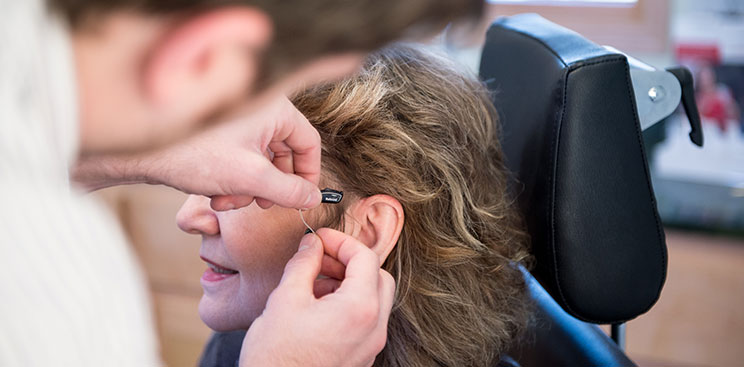
When we think of treatments for hearing loss, most of us think of hearing aids. These electronic devices are definitely the more popular choice when it comes to treatment for sensorineural hearing damage, which is the most common cause of hearing loss.
Hearing aids can be used to effectively treat different categories and severities of hearing damage, ranging from hearing loss in one ears to both, as well as from mild hearing loss to severe. These devices amplify sound signals to the affected ear and help the person hear well.
Cochlear implants, on the other hands, are generally used to treat hearing loss at its most severe level. These implants are recommended for cases of sensorineural hearing damage which can no longer efficiently be treated by hearing aids. As the name suggests, these implants are surgically placed into the cochlea (which is the inner ear), thereby working as a replacement for the inner ear and directly sending sound signals to the brain through your auditory nerve.
The fact remains that hearing aids are by far, the more popular choice compared to cochlear implants. The ratio of cochlear implant: hearing aids is 1: 16,000! The Food and Drug Administration reported in 2012 that in America, around 96,000 Americans treat their hearing loss with cochlear implants while 12 million people in this country use hearing aids. For those who seek treatment options for sensorineural hearing damage, less than 1% of these people will opt for cochlear implants.
While hearing aids are worn within the external portions of the ear, cochlear implants are actually placed inside the ear itself and also contain an external portion. These implants use electrodes a well as a receiver-stimulator which is placed behind the user’s ear. The implants send impulses to the brain directly, stimulating hearing without the use of the actual damaged hair cells within the inner ear.
Cochlear implants also contain microphones, a processor, as well as a transmitter, just like hearing aids. These pick up sound signals and send them to the electrode that is implanted within the cochlea. The electrodes then transfer these sound signals to the brain where they can be deciphered as legible sounds.
Due to the surgical nature of cochlear implants, it is viewed as a last resort of sorts. This is why most people with hearing loss are recommended to use hearing aids initially, to attempt to rectify their hearing needs. If the hearing devices do not appear to work due to severe degrees of hearing loss or total deafness, cochlear implants may be recommended. Those who need cochlear implants are asked to conduct a thorough medical examination, MRIs, X-Rays, as well as a detailed hearing examination.
After getting a cochlear implant, there are follow up services required for rehabilitation purposes. These include speech pathologists as well as audiologists. Cochlear implants can be very expensive, with a price range starting from $40,000 going up to $100,000. Several insurance companies provide some coverage for these surgical procedures, but to varying extents.

